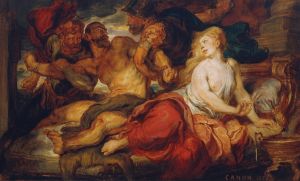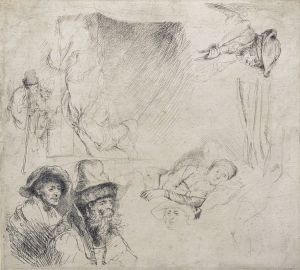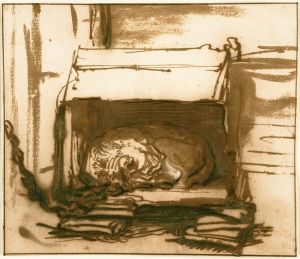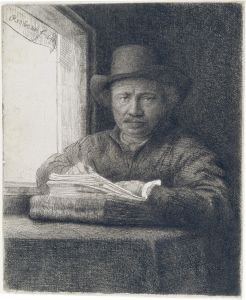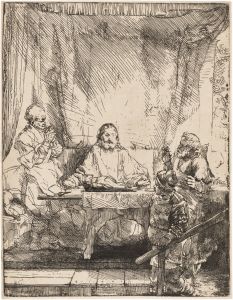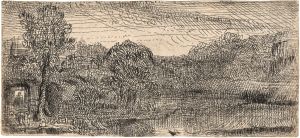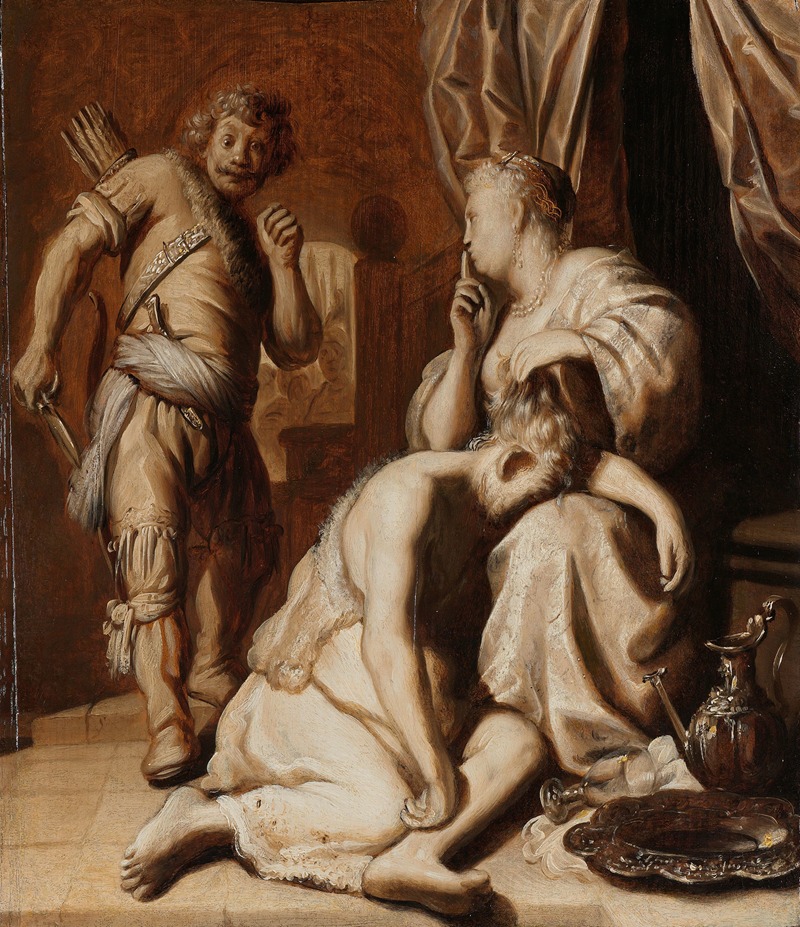
Samson and Delilah
A hand-painted replica of Rembrandt van Rijn’s masterpiece Samson and Delilah, meticulously crafted by professional artists to capture the true essence of the original. Each piece is created with museum-quality canvas and rare mineral pigments, carefully painted by experienced artists with delicate brushstrokes and rich, layered colors to perfectly recreate the texture of the original artwork. Unlike machine-printed reproductions, this hand-painted version brings the painting to life, infused with the artist’s emotions and skill in every stroke. Whether for personal collection or home decoration, it instantly elevates the artistic atmosphere of any space.
"Samson and Delilah" is a painting by the renowned Dutch artist Rembrandt van Rijn, created in 1628. This work is an early example of Rembrandt's exploration of biblical themes, which he frequently revisited throughout his career. The painting depicts the well-known story of Samson and Delilah from the Old Testament, specifically from the Book of Judges, chapters 16:4-22. This narrative has been a popular subject in art due to its dramatic and emotional content.
In the biblical story, Samson is a Nazirite with extraordinary strength, which he derives from his uncut hair. Delilah, a Philistine woman, is bribed by the lords of the Philistines to discover the secret of Samson's strength. After several unsuccessful attempts, Delilah finally persuades Samson to reveal that his strength lies in his hair. While Samson sleeps, Delilah has his hair cut, leading to his capture by the Philistines.
Rembrandt's interpretation of this story is notable for its intimate and psychological depth. The painting captures the moment of betrayal, focusing on the emotional tension between the characters. Rembrandt's use of chiaroscuro, a technique characterized by strong contrasts between light and dark, enhances the drama of the scene. The lighting in the painting draws attention to the expressions and gestures of the figures, emphasizing the betrayal and vulnerability of Samson.
The composition of "Samson and Delilah" is carefully constructed to convey the narrative's emotional impact. Delilah is depicted with a calm and composed demeanor, highlighting her role as the betrayer. In contrast, Samson appears vulnerable and unaware of the impending danger. The presence of other figures in the background, possibly Philistine soldiers, adds to the tension and foreshadows Samson's capture.
Rembrandt's attention to detail and his ability to convey complex human emotions are evident in this work. The textures of the fabrics, the play of light on the skin, and the subtle expressions of the characters all contribute to the painting's realism and emotional depth. This early work showcases Rembrandt's developing mastery of portraiture and narrative painting.
"Samson and Delilah" is housed in the Gemäldegalerie, part of the Staatliche Museen zu Berlin in Germany. It is considered an important piece in Rembrandt's oeuvre, reflecting his interest in biblical stories and his skill in rendering human emotion. The painting is a testament to Rembrandt's ability to transform a well-known biblical tale into a powerful visual narrative, capturing the viewer's attention through its dramatic composition and emotional intensity.
Overall, "Samson and Delilah" exemplifies Rembrandt's early style and his capacity to infuse traditional biblical subjects with psychological complexity and realism. This work remains a significant example of his contribution to the Baroque art movement and his enduring influence on the depiction of biblical themes in Western art.







